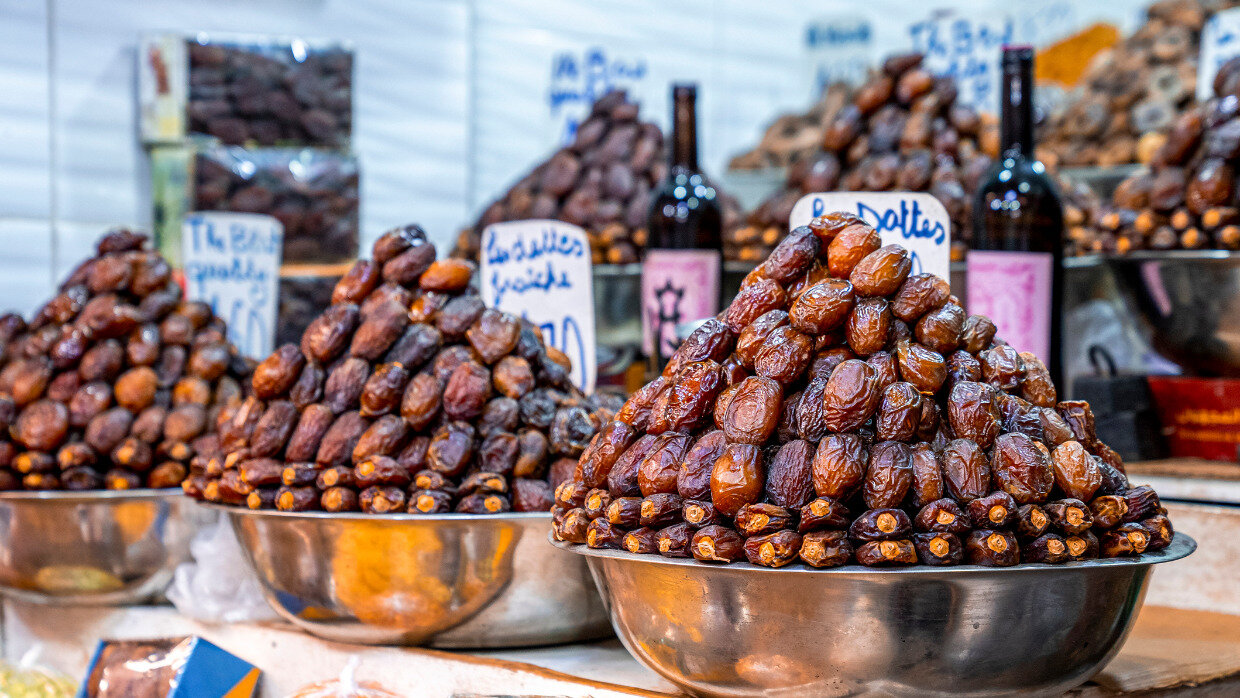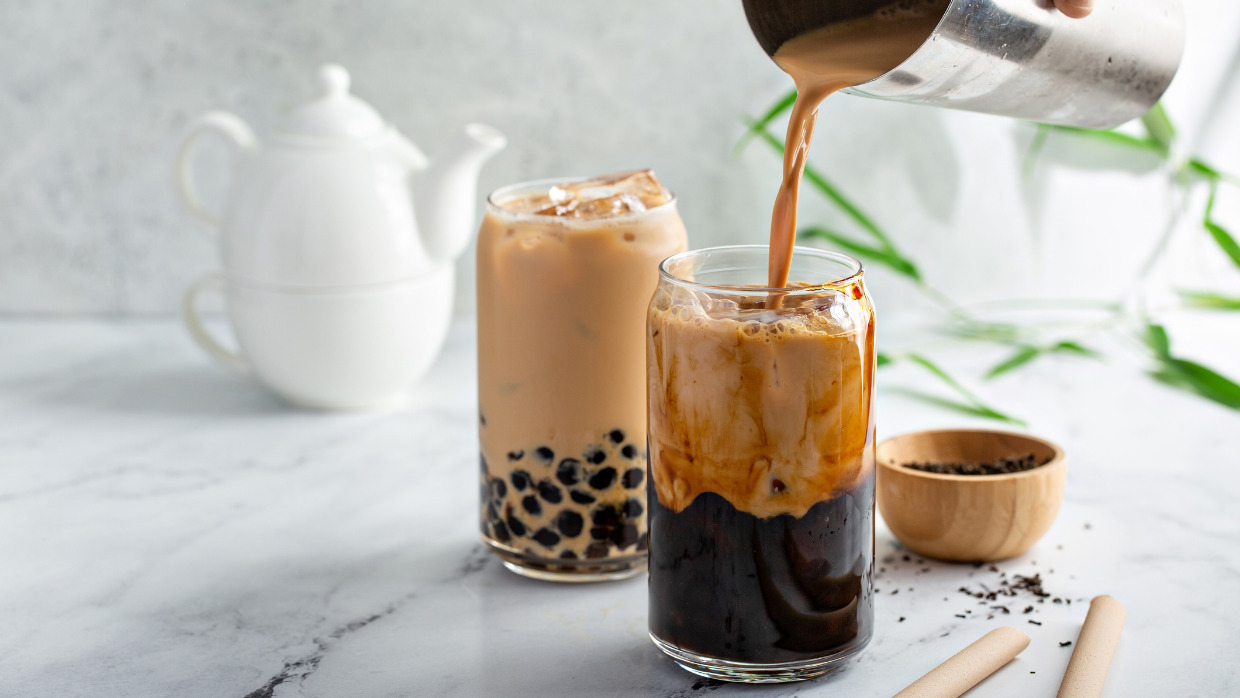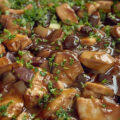What is now a trendy superfood, has been used as both sustenance and as a symbol of life since the days of our biblical ancestors.
Despite its rich caramel flavor and sticky yumminess, dates have never been a particularly popular fruit in the US. Now touted as a superfood and the ‘candy’ of choice for vegans, their image has been transformed.
Dates do deserve the status upgrade. They are higher in potassium than bananas, beat broccoli in fiber content and have a lower glycemic index than honey or maple syrup. In addition, they are also an excellent source of calcium, iron and magnesium.
Trendy dates
In the US, date farms, mostly in the hot, dry climates of California and Arizona, began marketing their juicy produce (picked at the peak of their freshness and sold fresh, not dry) under cool brand names such as Naked Date, Joolies and Date Better Snacks. Joolies, which comes packaged in a turquoise box with a colorful retro design, decided to add “California Superfruit” to its label.
No rebranding necessary in Israel
In Israel, there has never been a need for rebranding. Dates, one of our seven species, have been part of the local landscape and appreciated from time immemorial.
Dates have been grown in the Levant for 6000 years. In the 1960s, archeologist Ehud Netzer actually discovered a cache of 2000 year old date palm seeds when excavating Herod’s Palace on Masada. Eventually, one of these seeds made history when in 2005, Dr. Elaine Soloway from the Arava Institute managed to germinate it. The tree, dubbed the Methuselah Palm, now stands in the Arava Institute research park on Kibbutz Ketura in the south of Israel.
“Dates, palms and their fruits are almost as ubiquitous in Israel as chickpeas and olive oil but it wasn’t always this way,” writes cookbook writer, Adeena Sussman in Sababa, fresh, sunny Flavors from my Israeli Kitchen.
She notes that dates, despite their biblical prominence, had actually not been grown in Israel for centuries until being reintroduced to the agricultural landscape in the 1930s. The person behind this initiative was Ben-Zion Israeli (formerly Bezion Chernomorsky), who came on the Second Aliyah and was one of the founders of Kibbutz Kvutzat Kinneret on the shores of the Sea of Galilee. Israeli traveled under a pseudonym to Persia (now Iran), Iraq, Egypt and Algeria to gather palm shoots, which he then smuggled back into the country.
From this small beginning, date farms can now be found in both the Jordan Valley and south of the country in the Arava Desert. Israel is the supplier of half the world’s Medjool dates and exports 42,000 tons of dates annually.
Besides the fruit itself, Silan or date honey has become another important product in its own right. This deep mahogany syrup is made by boiling Medjool dates with water and then straining the pulp to release a syrupy liquid that can be described as something between honey and molasses.
Many scholars believe the ‘honey’ in the phrase “the land of milk and honey” is actually date syrup because there is no evidence of beekeeping in the Bible.
Dates in an Israeli Chef’s Kitchen
Shawna Goodman, a chef who studied at New York’s Natural Gourmet School and annually leads Shefa, a women’s journey in Israel, remembers the only dates she encountered
while growing up in Montreal where those “that you got in a baggie on the holiday of Tu B’shvat. They were always so dry and wrinkly. We didn’t appreciate them at all. Now I think of them as versatile, tasty and nutritious.”
Since moving to Israel with her family nine years ago, dates and Silan have become a staple of her pantry and “go-to ingredients”. This, she says, is because “dates, just like tahini, can be used in both sweet and savory dishes. They also caramelize well and add body and a beautiful color to cooked dishes as they soften down. Silan also balances out any acidity.”
In the cooking workshops she runs out of her Ra’anana kitchen, Goodman, who is also the author of Panache Montreal’s Flair for Kosher Cooking, likes to add a social action dimension.
This can include the importance of recycling and awareness of food wastage. Dates, she says, are excellent in this regard as they will always be used up in one way or another and don’t spoil easily.
Despite recipes with dates popping up increasingly on Pinterest and Instagram, being in Israel definitely adds another dimension, Goodman-Sone shares. “It just feels right to use them in recipes here. They are so much part of the Jewish calendar, the land and part of our biblical heritage. And you can find the juiciest Medjools at the regular makolet (grocery story) where they are as common as apples.”
Ideas for serving Medjool dates
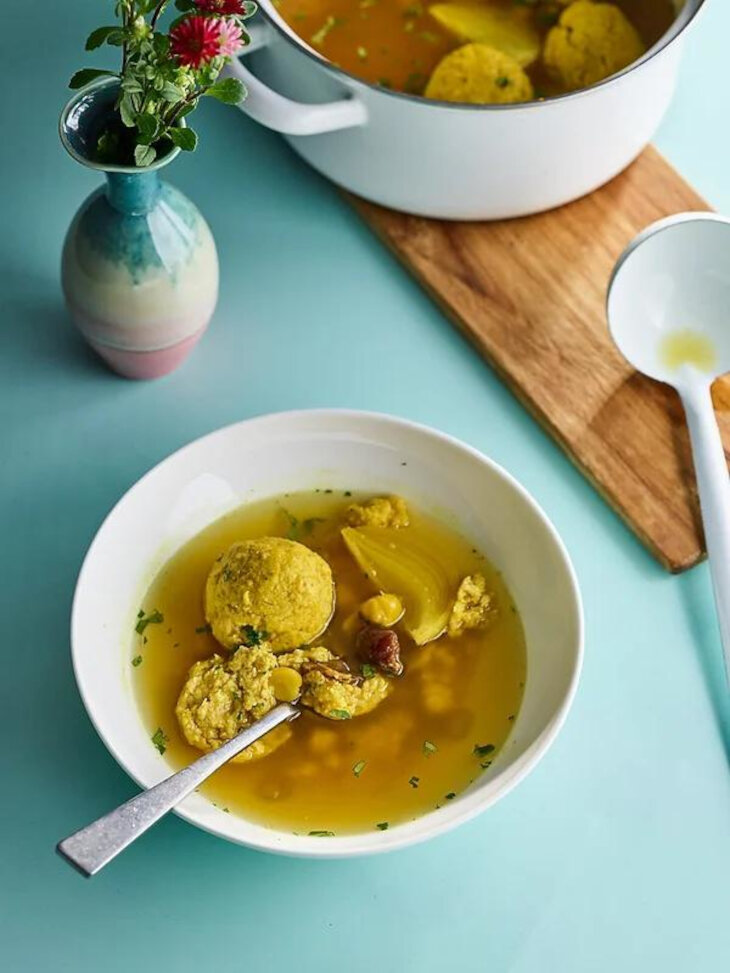 A chickpea and chicken meatball soup from Adeena Sussman.
A chickpea and chicken meatball soup from Adeena Sussman.
Smoothies, such as Turmeric, Almond Milk and Date Smoothie
 Source: JamieGeller.com
Source: JamieGeller.com

Chef Shawna Goodman makes these Levantine kitchen favorites in a jelly roll shape for cutting into slices instead of pressing them into molds and filling them with date spread individually.
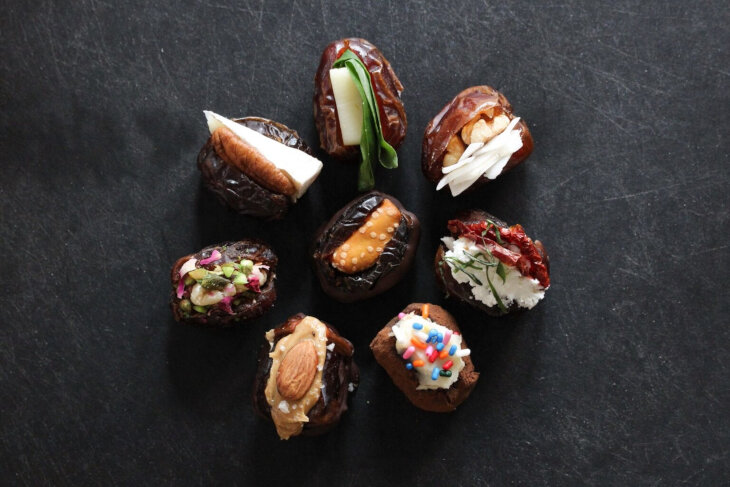 Source: CardamomandTea.com
Source: CardamomandTea.com
Stuff dates with marzipan, peanut butter/cacao nibs or nuts and coconut and more. Optional, dip into dark chocolate if the flavor combo fits.
Use silan, date honey in salad dressings, drizzled over yogurt or ice cream or as a natural sweetener in tea.





